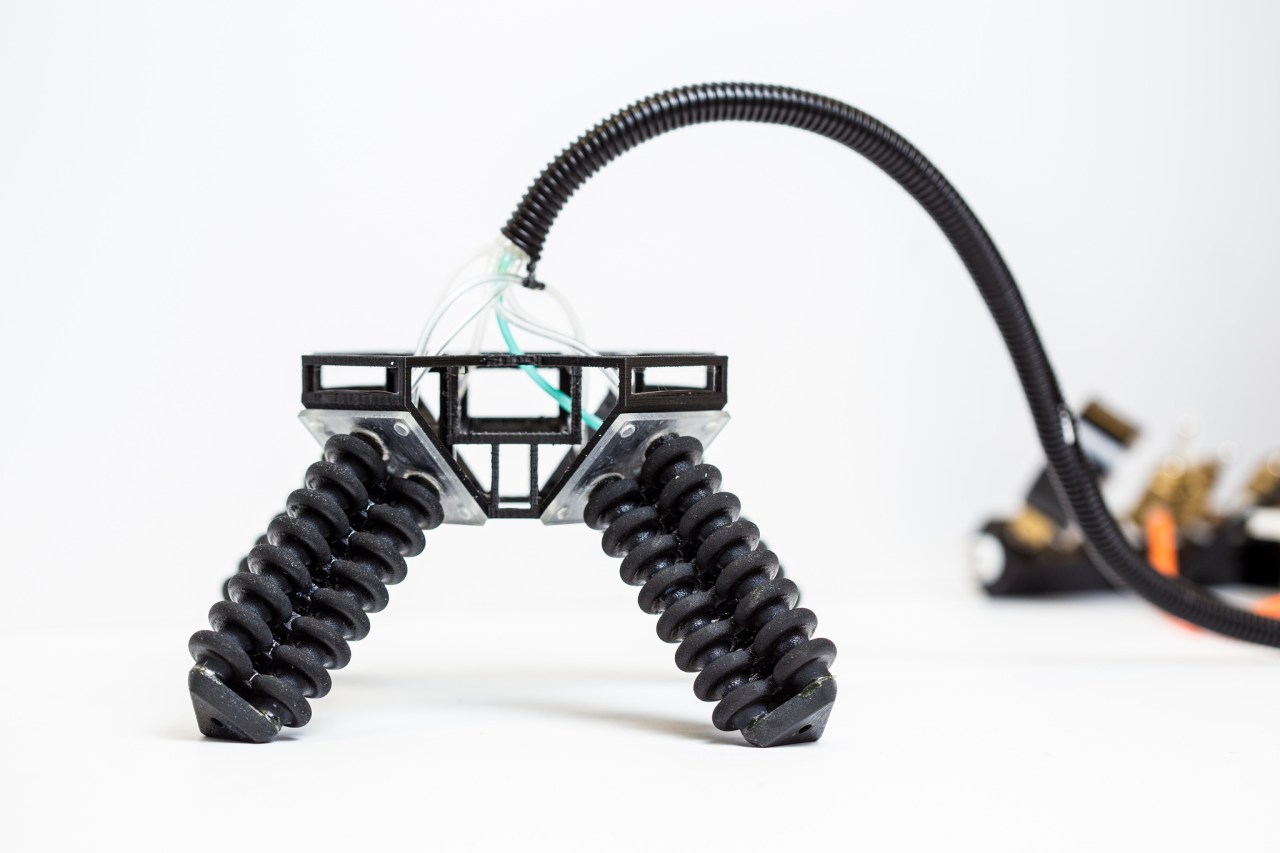In an era where technology often resembles science fiction, researchers at the University of California San Diego (UCSD) are pushing the boundaries of robotics with novel applications of 3D printing. Their latest innovation—a robot equipped with soft, adaptable legs—promises to redefine the way we conceive robot mobility across unpredictable landscapes. This unique technology takes inspiration from nature, making it an exciting venture into the realm of soft robotics.
The Genesis of Soft Robotics
Soft robotics, a field that mimics the flexibility and adaptability of natural organisms, has gained traction in recent years. At UCSD, a team led by assistant professor Mike Tolley has made notable strides in creating a robot that can traverse rough terrain such as rocks, sand, and mud. The robot’s primary advantage lies in its ability to conform to its surroundings, eliminating the requirement for intricate knowledge of the terrain. Instead, it adapts its walking pattern on-the-fly, ensuring that it can handle varied landscapes seamlessly.
How Does It Work?
The functionality of this innovative robot stems from a complex interplay of hard and soft materials. Its legs consist of a bladder-based system composed of expandable rubber chambers, combining the robustness of traditional robotics with the pliability of soft structures. This hybrid design allows for a unique approach to movement: when the robot encounters an uneven surface, it does not just struggle through; it essentially recalibrates its gait to navigate the obstacle.
- Unique Structure: The robot features a configuration of three 3D-printed bladders working in tandem to enable versatile movement. This design allows it not only to bend in one direction but to perform complex maneuvers across a full 360-degree range.
- Pressure-Based Control: By inflating specific combinations of bladders, the team has enhanced the control mechanisms, resulting in improved stability and movement fluidity, which are crucial for traversing unpredictable environments.
Applications and Future Potential
This new technology has far-reaching implications not just in robotic mobility, but across several domains including search and rescue operations, exploration, and industrial automation. For instance, consider the real-world utility in environments that are challenging for conventional robots—industrial zones with loose materials or even natural disaster areas. The soft robot can navigate where rigid robots might falter, offering unparalleled versatility.
Moreover, this innovation builds upon existing work in soft robotics, such as the octopus-inspired hands developed by Harvard’s George Whitesides’ lab. By integrating soft principles into walking mechanisms, the team has shown that bipedal motion need not be limited to conventional rigid frameworks. Such advancements highlight the potential for robots to evolve to meet the complexities of the real world, ensuring they do not just operate in ideal conditions.
Challenges and Considerations
While the development of soft legged robots brings many benefits, it also poses challenges. Unlike rigid robots that can easily replicate movements, engineering soft robots requires a deep understanding of how materials behave under different conditions. Consistent testing and iteration are crucial to refine movements and responses, ensuring that the robots can perform reliably in dynamic environments.
As this technology progresses, one can foresee robots adeptly handling logistical tasks that require navigating complex settings, possibly even along the lines of autonomous delivery in unpredictable urban landscapes.
Conclusion: The Road Ahead
The evolution of robotics is at an exhilarating crossroads, driven by innovative researchers committed to blending biological inspiration with advanced engineering. As UCSD’s soft-legged robot demonstrates, the next generation of robots may not only walk but also adapt, learn, and thrive in environments that would challenge even the most seasoned explorers.
As we look ahead, advancements in soft robotics could open up new avenues for exploration and improve the efficiency of industries reliant on robotic labor. The marriage of 3D printing technology with biomimetic principles has showcased the beautiful synergy between nature and machinery, leading us down a path that promises not only innovation but also enhanced functionality in our robotic companions.
At fxis.ai, we believe that such advancements are crucial for the future of AI, as they enable more comprehensive and effective solutions. Our team is continually exploring new methodologies to push the envelope in artificial intelligence, ensuring that our clients benefit from the latest technological innovations. For more insights, updates, or to collaborate on AI development projects, stay connected with fxis.ai.

